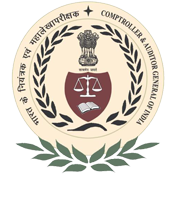Audit Reports

Tamil Nadu
Report No. 7 of 2021-Performance of Tamil Nadu Generation and Distribution Corporation Limited during pre and post Ujwal DISCOM Assurance Yojana
Overview
Introduction
With the objective of improving the health of state-owned DISCOMs, the Ministry of Power (MoP), Government of India (GoI) launched the Ujwal DISCOM Assurance Yojana (UDAY) Scheme in November 2015. The Scheme envisaged reforms for realising affordable and accessible 24x7 Power for all through financial turnaround and improving operational efficiency of the DISCOMs. A tripartite Memorandum of Understanding (MoU) was signed amongst GoI, GoTN and TANGEDCO in January 2017 specifying the responsibilities of the respective parties for achieving the operational and financial milestones.
This Performance Audit was taken up to assess the performance of TANGEDCO for achieving the intended goals viz., financial turnaround of DISCOM as well as the targeted operational improvement and intended outcomes envisaged in the tripartite MoU and Scheme.
Planning
As per MoU, TANGEDCO needs to prepare a detailed plan for various targeted activities focusing AT&C loss reduction measures for its implementation. Audit noticed that TANGEDCO did not prepare any assessment to implement the various targeted activities as well as the fund requirements based on budget estimates and sourcing of funds to execute the targeted activities.
Financial Management
GoTN, against its obligation to take over 75 per cent of the debt, had agreed to take over only 34.38 per cent of total eligible debt under UDAY Scheme. On account of this shortfall, TANGEDCO continued with burden of loan to the extent of ₹30,502 crore, defeating the objective of the Scheme. This had resulted in additional interest burden of ₹9,150.60 crore to TANGEDCO during 2017-20.
In respect of the remaining 25 per cent debt i.e., `7,605 crore, TANGEDCO was required to issue State Government guaranteed bonds with lesser interest bearing Bonds. The GoTN did not accept TANGEDCO’s request for issuing an unconditional and irrecoverable mandate to the RBI to make direct deduction in case of shortfall in servicing the bonds by TANGEDCO and the issue of Bonds got held up. Consequently, the loans carrying higher rate of interest were continued by TANGEDCO resulting in additional interest burden of `1,003.86 crore to TANGEDCO during 2017-20.
Due to partial takeover of debt by GoTN and failure to convert 25 per cent debt into bonds as well as the increase in the borrowings under capital loans for generation project by 87.05 per cent and working capital by 189.88 per cent during five years ending 2019-20, the outstanding debts of TANGEDCO increased from ₹81,312 crore (September 2015) to `1,23,895.68 crore at the end of 2019-20.
Though, the MoU stipulated for waiver of the overdue and penal interest, TANGEDCO failed to avail such benefits and paid the overdue interest/penal interest of ₹503.28 crore to Banks/FIs.
Implementation
As per the Scheme, the gap between the Average Cost of Supply (ACS) and Average Revenue Realised (ARR) should be brought to zero by 2018-19. Instead of targeted reduction of gap between ARR and ACS, this gap increased from ₹0.60 in 2015-16 to ₹1.07 per unit in 2019-20 (78.33 per cent) and the total shortfall during 2015-20 worked out to `42,484.70 crore.
TNERC had directed TANGEDCO to complete the process of providing meters to all the Hut and Agricultural consumers by June 2012 and September 2012 respectively. TANGEDCO did not complete the process of installation of meters for the said consumers and claimed the subsidy based on number of service connections and Horse Power basis respectively which resulted in loss of revenue to the extent of ₹1,541.49 crore during 2015-20.
In order to improve the performance of generating stations of TANGEDCO, the UDAY scheme stipulated that NTPC would handhold. However, TANGEDCO consulted NTPC for improving the efficiency of MTPS-I only and had not consulted NTPC in respect of other TPS.
The principle of MOD was not scrupulously followed in scheduling of power by SLDC. Consequently, TANGEDCO procured 44.53 MUs (from nine Long Term Open Access (LTOA) and two Medium Term Open Access (MTOA)) and 280.71 MUs (from ten LTOA and one MTOA) at a higher cost resulting in additional expenditure of ₹28.45 crore during 2018-20.
TANGEDCO failed to renew the PPA with existing supplier at an offered rate of ₹3.50 per unit which was already approved by TNERC for the period September 2017 to August 2019. However, during the same period, it procured power from power exchanges at the rates ranging from ₹4.10 to ₹5.48 per unit. This resulted in additional expenditure of ₹149.02 crore to TANGEDCO.
TANGEDCO did not adopt the method prescribed by CEA for calculation of AT&C loss and was under-reporting the AT&C in the range of 2.24 to 3.41 per cent during 2015-20. The value of energy lost due to not meeting the target set out in MoU as per CEA’s method of calculation was ₹6,547.25 crore.
TANGEDCO did not procure the related Modems and Data Concentrator Unit (DCU) for Device Language Message Specification compliance feeders meters and Distribution Transformer meters to facilitate online collection of data from these meters. Consequently, even after spending `183.69 crore, TANGEDCO could not use these meters for accurate energy accounting and effective monitoring of the AT&C loss.
To provide regulated supply to agricultural consumers and continuous supply to non-agricultural consumers in rural areas, separation of agricultural load in 1920 feeders during 2017-20 was envisaged in the MoU. Against this target, TANGEDCO reported a completion of segregation of agriculture load only in 22 feeders (1.15 per cent of the target) up to March 2020 at a cost of `95.60 crore.
Monitoring
The monitoring of the implementation of the Scheme was found to be inadequate. As per MoU, review of performance of TANGEDCO was to be done on monthly basis at State Government level. Even though GoTN formed committee for the purpose, out of 38 months since signing the MoU in January 2017 only seven meetings were held at State Government level. Further, Key Performance Indicators (KPIs) for each officer-in-charge in areas of AT&C loss reduction and improvement in metering, billing and collection efficiency was not fixed which indicated lack of concerted action to minimize AT&C loss.
Conclusion
The MoU was finalised for partial takeover of debts of TANGEDCO which rendered the Scheme unworkable ab initio. The shortfall in take over of debt by GoTN and failure to convert TANGEDCO’s debt into lower interest carrying Government guaranteed bonds resulted in interest burden of `10,154.46 crore to TANGEDCO during 2017-20. As regards, the operational parameters, as against the envisaged reduction in the gap between ACS and ARR, it increased from 60 paise per unit in 2015-16 to 107 paise per unit in 2019-20 due to non-revision of tariff to reflect the cost of fuel, higher AT& C loss and other inefficiencies in cost reduction measures. Further, the debts of TANGEDCO increased to `1,23,895.68 crore at the end of 2019-20. No significant improvement was visible in TANGEDCO’s financial position excepting transfer of TANGEDCO’s debt of `22,815 crore to GoTN, yielding only a temporary relief to TANGEDCO.
Recommendations
For achieving the financial turnaround as envisaged in the UDAY Scheme, Audit recommends that GoTN and TANGEDCO may review and restructure the debts to reduce the interest cost, submit tariff petitions to TNERC regularly, calculate the AT&C losses accurately as per the methodology prescribed by CEA to have better control over it. TANGEDCO may work out plan of action for feeder segregation with a focus to reduce the AT&C loss. Identification of Key Performance Indicators and the Resource Person for implementation of Scheme besides periodical review by the Top Management is a key for effective utilisation of resources and efficient functioning of TANGEDCO.
Download Audit Report
-
Report No. 7 of 2021-Performance of Tamil Nadu Generation and Distribution Corporation Limited during pre and post Ujwal DISCOM Assurance Yojana
 (47.77 MB)
Download
(47.77 MB)
Download
-
Table of Contents
 (0.97 MB)
Download
(0.97 MB)
Download
-
Perface
 (0.26 MB)
Download
(0.26 MB)
Download
-
Overview
 (2.39 MB)
Download
(2.39 MB)
Download
-
Chapter I
 (2.03 MB)
Download
(2.03 MB)
Download
-
Chapter II
 (29.03 MB)
Download
(29.03 MB)
Download
-
Chapter III
 (1.56 MB)
Download
(1.56 MB)
Download
-
Chapter IV
 (1.35 MB)
Download
(1.35 MB)
Download
-
Annexures
 (1.87 MB)
Download
(1.87 MB)
Download
-
Glossary of Abbreviations
 (1.12 MB)
Download
(1.12 MB)
Download

